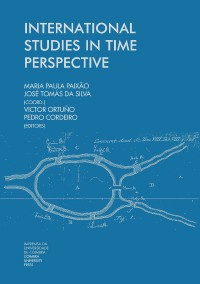Please use this identifier to cite or link to this item:
https://hdl.handle.net/10316.2/38626| Title: | Why is the distance between what we know and what we don’t know always beyond of what we can achieve with our velocity of learning? | Authors: | Rodrigues, Nuno Álvaro Ferreira Kovacec, Alexander Almeida, Ana Cristina Ferreira de |
Keywords: | heuristics;mathematics;problem solving;time perspective | Issue Date: | 2013 | Publisher: | Imprensa da Universidade de Coimbra | Journal: | http://hdl.handle.net/10316.2/38604 | Abstract: | Learning and use of what is learned is not restricted to school. But, besides knowledge, will and management skills are necessary to reach the pace. The social implementation of the intellectual booty highlights the mathematical mastery of the population, so that knowledge of mathematics should be an integral part of an individual and an educational priority. Although it is true that the construction and consolidation of knowledge happens throughout life, adolescence is undoubtedly one of the most important and sensitive periods, anticipating further capacity building. In Portugal, the results obtained by students in the national exams are, on average, bellow the expected. Unfortunately, educational reforms implemented over the past decades have not solved this problem. How can we motivate students to devote time and energy to the study of mathematics now for their future success? Which strategies catalyze good performances for lifelong learning? Heuristics! Our research project has started with a workshop for high school teachers at an Educational Center, in Coimbra, in 2011. Meeting sessions were devoted to mathematical problem solving supported by George Polya’s model. Teachers were invited to apply this methodology to ninth grade students, through the 2011/2012 school year. In parallel with the tracking results by solving selected questions extracted from the International Mathematical Kangaroo competition, pupils had to answer a questionnaire about their attitudes towards Math and Problem Solving in the beginning and at the end of the school year. In this paper we explore the promise of learning Mathematics problem-based to shorten the distance between what we do not know and willingness to learn. This is a glimpse into mathematical problem solving practice in a time perspective. | URI: | https://hdl.handle.net/10316.2/38626 | ISBN: | 978-989-26-0668-2 978-989-26-0775-7 (PDF) |
DOI: | 10.14195/978-989-26-0775-7_22 | Rights: | open access |
| Appears in Collections: | International studies in time perspective |
Files in This Item:
| File | Description | Size | Format | |
|---|---|---|---|---|
| why_is_the_distance_between_what_we_know.pdf | 3.91 MB | Adobe PDF |  |
Items in DSpace are protected by copyright, with all rights reserved, unless otherwise indicated.
